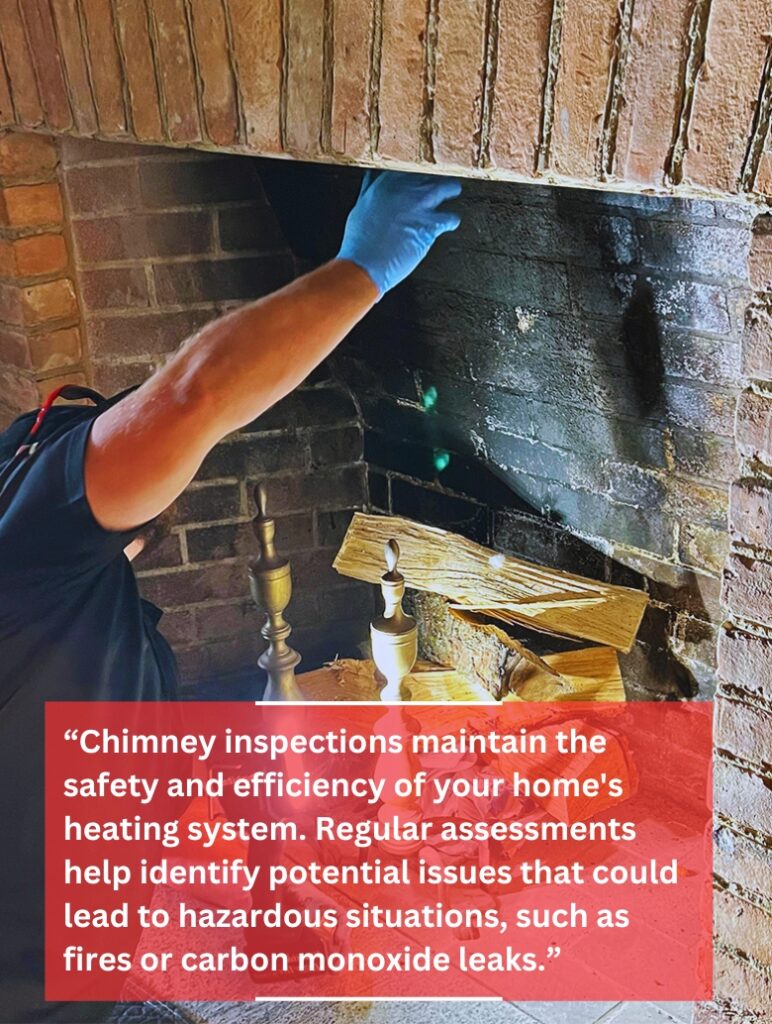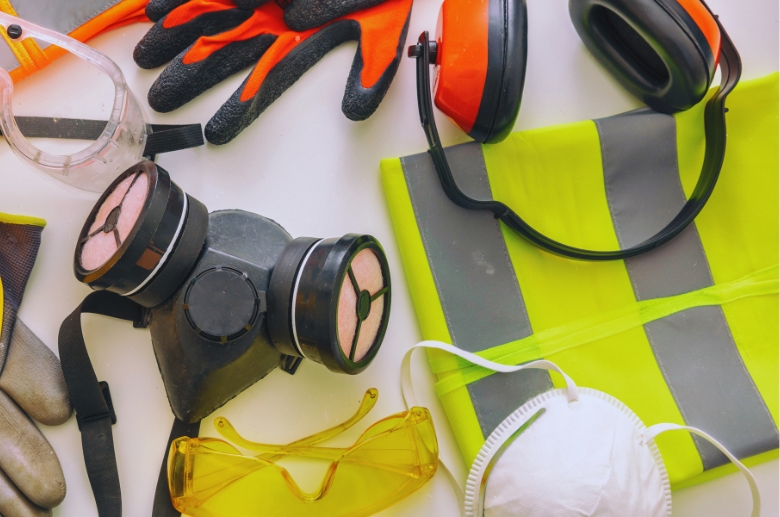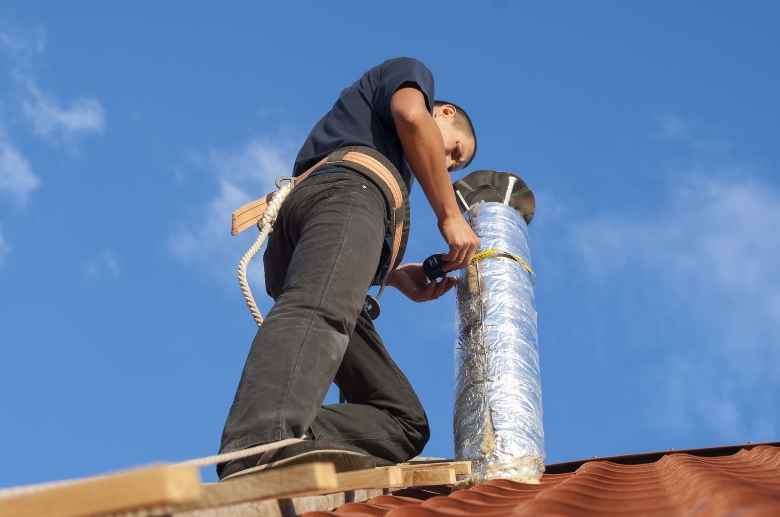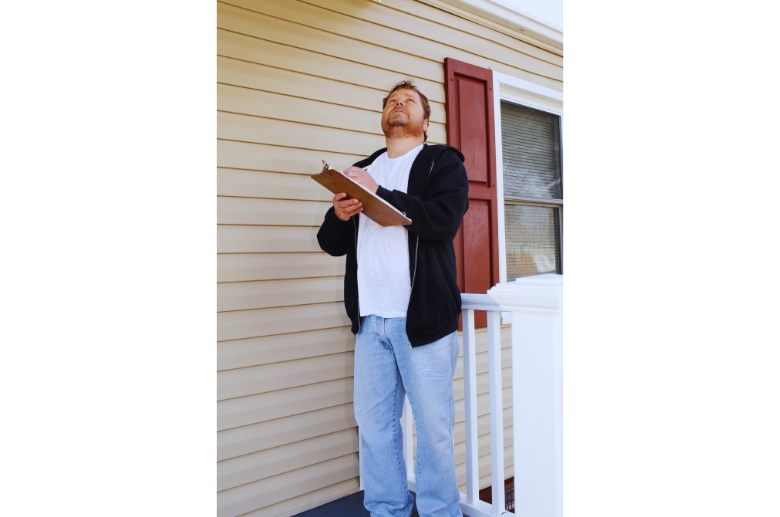A well-maintained chimney is not just a picturesque addition to your home. It’s a vital element in ensuring the safety and functionality of your living space. Unfortunately, many homeowners underestimate the importance of regular chimney inspections, unknowingly putting their homes at risk.
Here’s something to think about, over 90% of chimney-related incidents stem from creosote buildup, while solid fuel appliances contribute to approximately 70% of these cases. An alarming 75% of home heating-related fires are directly linked to chimney issues, with over 60% occurring during winter when fireplaces are commonly used.
This blog is your comprehensive guide as a homeowner, providing an essential chimney inspection checklist to help you safeguard your property and loved ones. Keep reading because your home’s safety depends on it.
Overview of Chimney Inspection

Chimney inspections maintain the safety and efficiency of your home’s heating system. Regular assessments help identify potential issues that could lead to hazardous situations, such as fires or carbon monoxide leaks.
A thorough chimney inspection comprehensively evaluates the system’s structure, flue, and overall functionality.
Types of Chimney Inspections
Chimney inspections are categorized into different levels, each serving specific purposes based on the extent of the examination required.
Level 1: Basic Visual Examination
A Level 1 chimney inspection is the most basic and typically recommended for chimneys under continued service, with no significant changes to the system.
During this inspection, a professional chimney inspector visually examines accessible portions of the chimney, looking for any structural instability, blockages, or creosote buildup. They also check for basic compliance with safety standards and local building codes.
Level 2: In-Depth Inspection with Tools and Equipment
Level 2 chimney inspection is necessary when changes are made to the system, such as the flue’s fuel type, shape, or material.
This inspection includes all elements of a Level 1 inspection, along with a more thorough examination. It’s particularly recommended as part of a chimney inspection when buying a home, ensuring that any modifications or issues are identified and addressed. It may involve using specialized tools like video cameras to inspect the internal structure and walls of the chimney.
Additionally, the technician might inspect the attic, crawl spaces, and other accessible areas to check for any issues affecting the chimney’s performance. This comprehensive approach is crucial during the home buying process, as it helps in assessing the safety and functionality of the chimney before the purchase is finalized.
——
Do You Need to Hire Chimney & Fireplace Expert?
Get free quotes from qualified experts near you. No commitment required!
——
Level 3: Detailed Structural Examination
This is the most comprehensive and is conducted when serious hazards are suspected. This type of inspection involves removing certain components of the building or chimney to gain access to concealed areas.
It may include the removal of walls or other structures to uncover potential hazards or defects that may not be apparent during Level 1 or Level 2 inspections. Level 3 inspections are typically undertaken when a chimney fire or other significant events may have caused damage.
Regular chimney inspections, as per the appropriate level, are crucial to ensure the safety and functionality of your chimney system. Adhering to these inspection protocols can effectively maintain your chimney and prevent potential risks associated with neglect or malfunction.
Professional Tip: Always consult a certified chimney professional to conduct these inspections and address any concerns promptly.
Chimney Inspection Checklist
With the right chimney inspection checklist, you can safeguard yourself from the risks discussed earlier. So, here’s a checklist of everything you need to assess.
Pre-Inspection Checklist
Before you commence the chimney inspection, make sure you have the following safety gear, tools, and lighting to ensure a thorough and safe examination:

Safety Gear
Wearing appropriate safety gear protects you from potential hazards during the inspection. Ensure you have the following safety equipment:
- Sturdy gloves to protect your hands from debris and sharp edges.
- Safety glasses to shield your eyes from any particles or debris dislodged during the inspection.
- A dust mask to prevent the inhalation of harmful particles and soot.
Tools
The right tools can make your chimney inspection more effective and efficient. Make sure you have the following tools on hand:
- A reliable flashlight to illuminate dark and hard-to-reach areas of the chimney.
- A mirror to inspect the less accessible parts of the chimney, such as the flue interior.
- A trowel or a small shovel to remove any debris or obstructions blocking the chimney.
- Ensure you have a strong and reliable lighting source to properly inspect all parts of the chimney, including the flue, smoke chamber, and exterior.
Interior Inspection Checklist
Once you’ve assembled the required tools, focus on these elements during inspection to ensure your home fireplace’s continued safety and efficiency.
Inspect The Firebox and Hearth
Check for any signs of damage or wear and tear, as these areas are exposed to high temperatures and can deteriorate over time.
- Examine the firebox for cracks, gaps, or any signs of structural damage that may compromise its integrity.
- Regularly clean out any ash and residue buildup, as the accumulation of these materials can potentially ignite a fire if not properly managed.
Check The Flue Liner
When assessing the flue liner, pay close attention to the following:
- Use the flashlight to check the interior walls for any dark, tar-like substance (creosote).
- If you notice accumulations as small as 1/8 inch, it’s crucial to clean thoroughly to prevent fire hazards.
- Maintain a 3-foot clearance from combustible materials.
- Keep the area around the chimney clear to minimize the risk of accidental fires.
- Examine the liner for cracks or gaps that could compromise safety.
- Address even minor issues promptly to ensure the overall integrity of the chimney system.
Inspect The Damper
The damper controls the airflow within the chimney and regulates the heat distribution in your living space. A malfunctioning or damaged damper can impact the efficiency of your heating system.
To verify the functionality of the damper, here’s what you need to do:
- Start by visually inspecting it for any signs of damage or obstruction.
- Open and close the damper to ensure it moves freely and smoothly.
- Listen for any unusual sounds or resistance during the operation.
Additionally, you can use a flashlight to check for debris or blockages inside the chimney that may interfere with the damper’s movement. If you notice any issues, such as rust, warping, or difficulty in operation, it may be necessary to repair or replace the damper to maintain optimal airflow and heating efficiency.
Check The Smoke Chamber
A well-maintained smoke chamber is essential for efficient smoke and gas ventilation. Check for any irregularities that might impede the proper flow of smoke. Ensure the walls of the smoke chamber are smooth and free from deposits, as any obstructions like debris can lead to poor fireplace performance and potential smoke backdrafts.
Additional Factors to Consider
Aside from the primary components, several other factors can significantly impact the safety and efficiency of your chimney. Consider the following during your inspection:
- Look for the presence of any animals or nests that could obstruct the chimney and hinder proper airflow.
- Add safety detectors such as Carbon Monoxide alarms.
- Check the attic for any signs of heat or fumes, which could indicate a leak or ventilation issue within the chimney system.
- A chimney inspection for a gas fireplace is essential, focusing particularly on the risk of gas leaks. This involves a thorough examination for any structural damages or obstructions that might impede the efficient operation of the gas fireplace or lead to unsafe conditions.
——
Do You Need to Hire Chimney & Fireplace Expert?
Get free quotes from qualified experts near you. No commitment required!
——
Exterior Inspection Checklist
The chimney’s exterior demands careful examination to identify any visible signs of damage or wear. Here are the areas that need your attention.

Check The Chimney Cap/Spark Arrestor
The chimney cap is not merely an aesthetic addition but is crucial in safeguarding the chimney. An appropriately fitted chimney cap can significantly reduce the likelihood of wildlife intrusion, ultimately preventing potential blockages and damage to the chimney system.
Additionally, a chimney spark arrestor ensures that embers from the fire don’t escape and cause a fire. So, inspect the chimney cap for any signs of rust, damage, or misalignment. Additionally, ensuring no blockages or nests within the cap is crucial for maintaining optimal chimney function.
Examine The Chimney Crown
A frequently overlooked aspect during chimney inspections is the chimney crown. Surprisingly, older chimneys that exhibit crown damage often go unnoticed until it leads to more severe issues like a broken crown.
Check the chimney crown for any cracks, deterioration, or signs of wear and tear. A robust, intact chimney crown protects the structure from water damage, prevents leaks, and ensures long-term durability.
Examine The Brickwork and Mortar
The chimney’s masonry is prone to damage, particularly due to extreme weather conditions. During inspections, meticulously examine the chimney for any visible cracks, missing mortar, or signs of weather damage.
Efflorescence and general deterioration should also be closely monitored. The mortar joints, in particular, play a critical role in maintaining the chimney’s structural integrity. Regular checks to ensure their solid condition are necessary to prevent any potential structural issues from compromised mortar.
Check Your Flashing
Properly installed chimney flashing prevents water leaks, which can significantly damage the chimney and its surrounding structures. In fact, improperly installed flashing is often the leading cause of chimney leaks. During inspections, it is vital to check the flashing for any signs of deterioration, rust, or improper installation.
Additionally, thorough checks for any evidence of leaks or water damage around the flashing are necessary to ensure the chimney’s long-term structural integrity and functionality.
Chimney Height
In general, a chimney should be at least 3 feet above the highest point of the roof within 10 feet of the chimney. If there are any trees or other obstructions within 10 feet of the chimney, the chimney should be at least 2 feet above them.
These minimum heights ensure that smoke and fumes are effectively dispersed away from the house and that they do not enter windows or other openings.
Inspection of Tree Branches
Overgrown tree branches can pose a significant fire hazard to chimneys. Branches that are too close to the chimney can catch fire and spread the flames to the house. Therefore, it is essential to inspect tree branches regularly and remove any that are within 10 feet of the chimney.
Here’s a checklist you can use:
- Check for branches that are overhanging the chimney or touching the chimney structure.
- Look for branches that are dead, diseased, or weak, as these are more likely to break and fall onto the chimney.
- If any branches are found within 10 feet of the chimney, they should be trimmed or removed by a qualified arborist.
Regular chimney inspections and tree branch maintenance are crucial for ensuring the safety of your home and preventing potential fire hazards.
Inspection of Chimney Appliances
Chimney appliances such as furnaces and water heaters are integral to a home’s heating system. Including these appliances in your chimney inspection checklist ensures their safe and efficient operation.
Furnace
The furnace is a central heating appliance, and ensuring its proper functioning is vital for comfort and safety. During your chimney inspection, check the furnace’s ventilation, ensuring adequate clearance from combustible materials.
A lack of adequate clearance can pose a significant fire hazard. Additionally, inspect the furnace flue to ensure it’s clear and free from blockages. A blocked flue can lead to dangerous carbon monoxide buildup within the home.
Lastly, regular furnace maintenance, including filter replacement and professional servicing, should also be considered part of your routine chimney appliance inspection.
Hot Water Heater
Proper ventilation is crucial to ensure the safe operation of the water heater. Inspect the ventilation system to verify that it allows for the release of combustion gases. Any obstructions or improper venting can lead to a buildup of harmful gases within your home.
It’s also important to check for flue blockages in the water heater’s chimney connection. A blocked flue can impede the release of combustion byproducts and may pose health risks. Like the furnace, water heaters benefit from regular maintenance, including flushing the tank and checking the temperature and pressure relief valve to ensure safe operation.
Professional Chimney Inspection Services and Documentation

Professional chimney inspection services are invaluable for homeowners seeking to ensure their chimneys’ long-term safety and efficiency. These services thoroughly assess the chimney’s condition and offer essential guidance and information for maintaining its integrity.
While many homeowners can manage routine inspections and maintenance tasks, certain signs necessitate the expertise of a professional chimney sweep. These indicators may include persistent chimney leaks, excessive creosote buildup, or structural issues such as cracks or masonry deterioration.
Consulting a professional chimney inspector ensures a comprehensive evaluation of the chimney’s condition and facilitates the implementation of appropriate remedies to mitigate potential risks.
For this, it’s essential to have a detailed Chimney Condition Report, which provides a comprehensive overview of the chimney’s current state and any identified issues during the inspection.
This report typically includes detailed notes on the chimney’s structural integrity, the condition of its various components, such as the cap, crown, masonry, and flashing, and any observations related to the chimney appliances.
It’s also important to maintain a detailed record of previous inspections, repairs, and maintenance activities. This historical data serves several purposes:
- Provides a comprehensive overview of the chimney’s condition over time, allowing for the identification of recurring issues.
- Assists professionals in diagnosing problems more accurately and efficiently, saving time and resources.
- Guides homeowners in making informed decisions about future maintenance and repair needs.
——
Do You Need to Hire Chimney & Fireplace Expert?
Get free quotes from qualified experts near you. No commitment required!
——
Critical Problems to Watch Out For
A vigilant homeowner should be aware of various potential issues that can affect the safety and functionality of their chimney. Regularly monitoring and addressing these problems can help prevent more significant, costly, and potentially dangerous issues. Some critical problems to watch out for include:
1. Signs of Chimney Fires
Watch out for indicators of past chimney fires, such as puffy creosote, which looks like honeycombed or blistered buildup, and warped metal components within the chimney structure.
These signs suggest the chimney has been exposed to excessively high temperatures, indicating a potential fire hazard. If such signs are observed, it is crucial to seek professional assistance immediately to assess and address the extent of the damage and prevent future fires.
2. Blockages and Obstructions
Blockages or obstructions within the chimney can significantly affect the draft, leading to inefficient airflow and potential smoke backflow into the living space. Common culprits of blockages include animal nests, debris buildup, or structural issues.
Regularly inspecting the chimney for any signs of blockage or obstruction and ensuring the flue is clear and unobstructed is vital for maintaining proper ventilation and preventing potential hazards.
3. Water Damage and Moisture
Watch for signs of water damage, such as moisture seepage, discoloration, or efflorescence, the white powdery substance that appears on masonry surfaces. Over time, moisture can deteriorate the masonry bricks and compromise the chimney’s structural stability.
Implementing preventive measures, such as installing a chimney cap and waterproofing the masonry, can help protect the chimney from water-related damage.
4. Cracks in the Chimney Structure
Inspect the walls and joints of the chimney system regularly for any visible cracks. Cracks in the masonry or joints can compromise the chimney’s structural integrity, leading to potential safety hazards.
These cracks can be caused by various factors, including temperature fluctuations, settling, or general wear and tear over time. Promptly addressing any observed cracks through professional repairs or restorations is crucial for maintaining the chimney’s stability and preventing further damage.
Conclusion
By actively monitoring and addressing potential issues, you can ensure the long-term integrity of your chimney and prevent costly repairs or hazardous situations. A thorough chimney inspection plays a pivotal role in ensuring home safety.
At Golden Gate Chimney, we have dedicated professionals committed to providing comprehensive chimney inspection services to safeguard your home and family. Our experienced team has the expertise and knowledge to assess and address any chimney-related concerns, ensuring that your chimney operates efficiently and safely throughout the year.
Contact us today to schedule your next chimney inspection and take a proactive step toward maintaining your home’s secure and well-functioning chimney.






